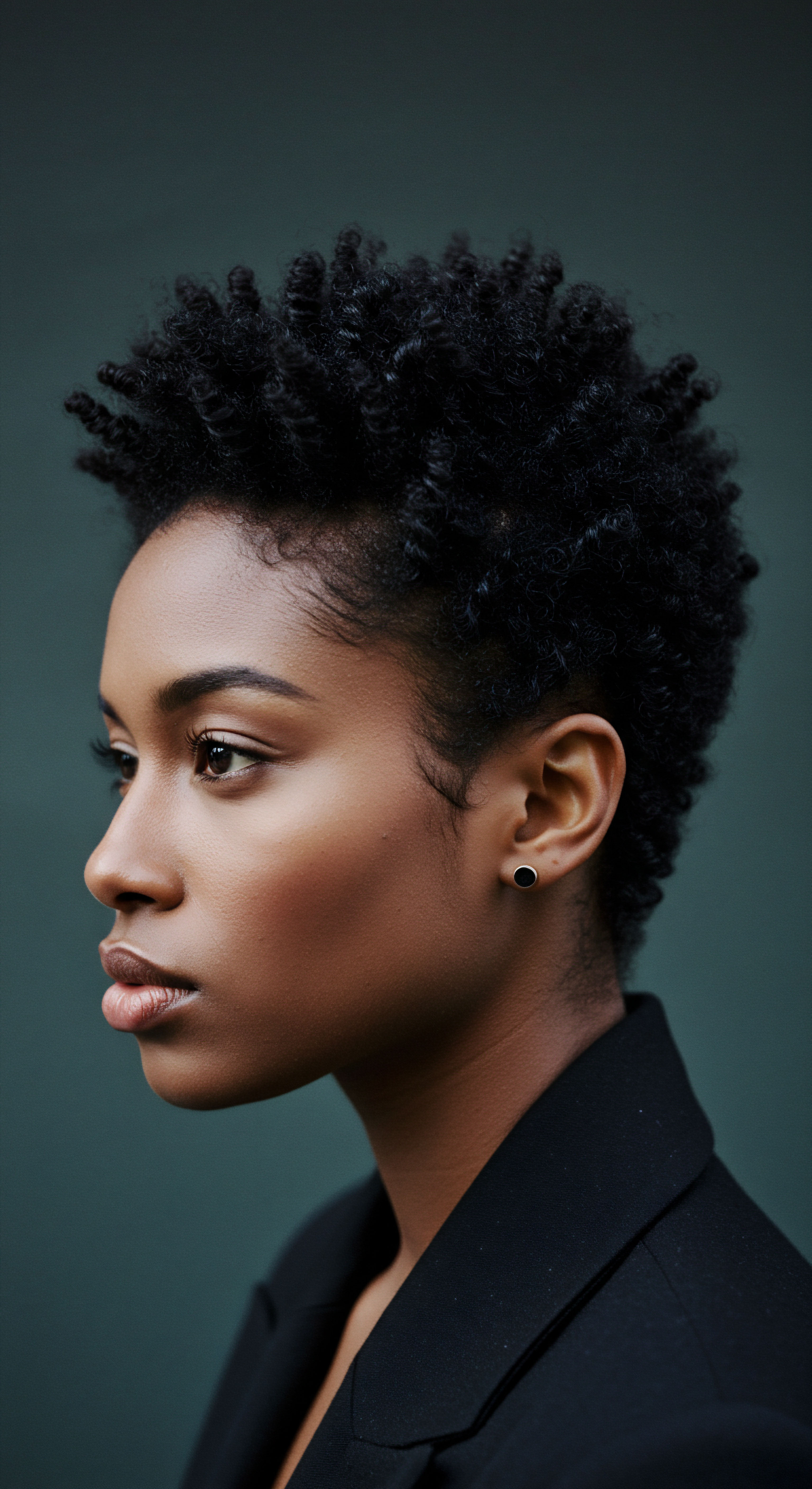
Roots
The quiet hum of the night, a universal call to rest, has always held a deep connection to our most personal routines. Long before the modern world introduced its hurried pace, our ancestors understood that the path to peaceful slumber extended beyond simply closing one’s eyes. It often began with the thoughtful tending of their hair, a practice far more intricate than mere aesthetics.
These ancient hair care customs, rich with cultural significance and practical wisdom, gently influenced the nightly rhythm, setting a stage for restorative sleep. The way hair was prepared for the night was not simply about preserving a style; it was about comfort, hygiene, spiritual connection, and an unspoken dialogue with the body’s natural need for calm.
Consider the profound role hair played in ancient societies. It was a marker of identity, status, and spiritual belief. Consequently, its care was elevated to a ritual, a deliberate act of self-tending that often extended into the evening hours. This nightly engagement with one’s strands became an integral part of preparing the mind and body for rest, a testament to how deeply interwoven personal care was with overall well-being.

Ancient Hygiene and Restful Nights
The concept of hygiene, while different from our contemporary understanding, was undeniably central to ancient hair practices and, by extension, to the quality of sleep. Cleanliness was not merely a superficial pursuit; it was tied to health, spiritual purity, and social standing. In many ancient civilizations, bathing and hair cleansing were regular occurrences, often involving natural ingredients that offered more than just cosmetic benefits.
For instance, the ancient Egyptians, renowned for their meticulous grooming, bathed daily and utilized various oils and cleansers for their hair. These practices served to prevent issues like lice and maintain overall scalp health, which would certainly contribute to comfort during sleep. An inscription on a 4500-year-old Canaanite comb, stating “May this tusk root out the lice of the hair and the beard,” underscores the long-standing concern for hair hygiene and pest control, a factor that directly impacts one’s ability to rest undisturbed.
The emphasis on cleanliness extended to the very materials used for sleep. While soft pillows as we know them were not universally common, especially in earlier periods, headrests were utilized, particularly in Egypt, to maintain elaborate hairstyles and promote air circulation, indirectly aiding comfort. A clean scalp, free from irritation and tangles, naturally sets a more conducive environment for a tranquil night.
Ancient hair care practices, far from being mere vanity, were often deeply connected to foundational hygiene, promoting physical comfort essential for restful sleep.
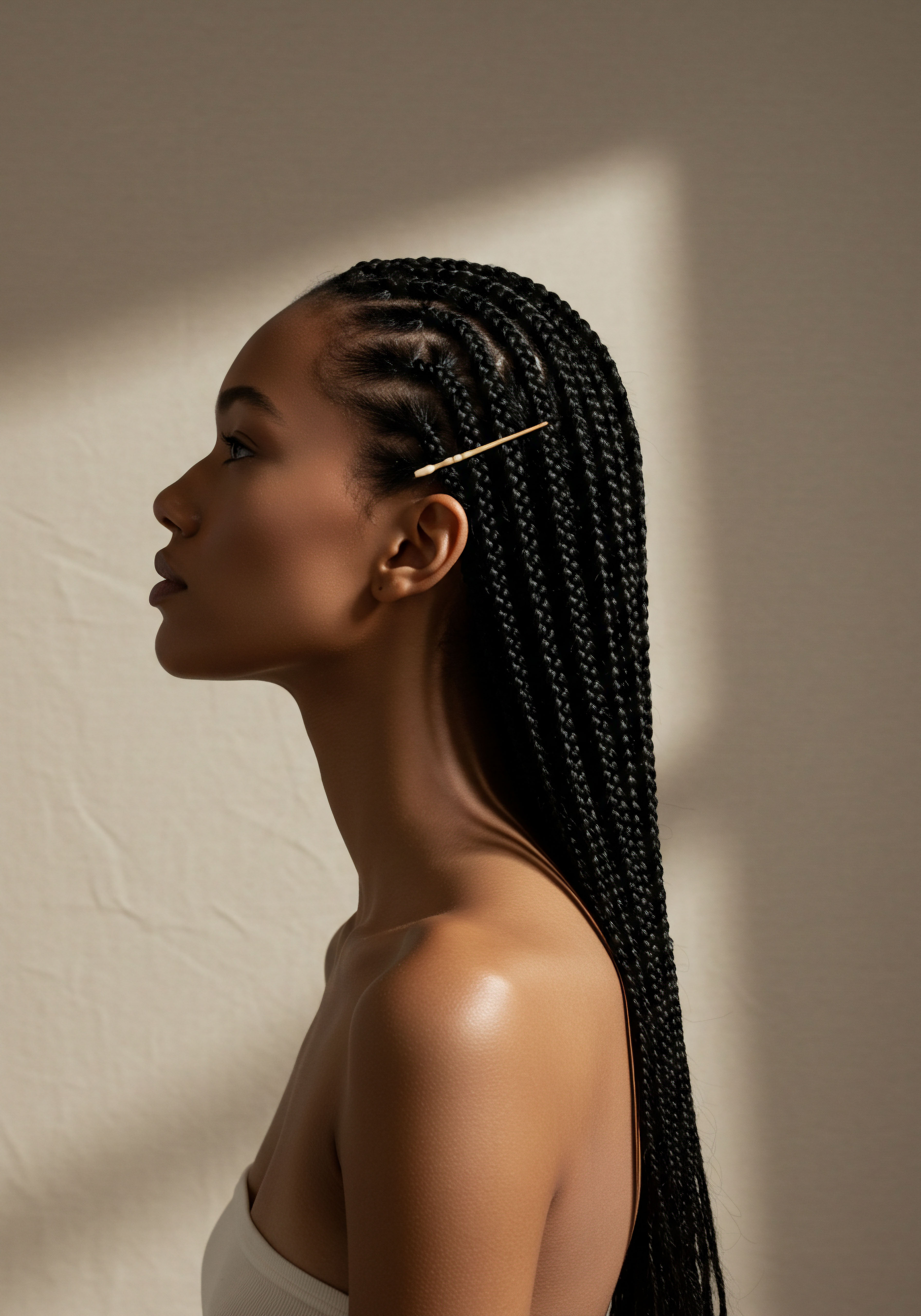
Herbal Allies for Evening Calm
The plant kingdom offered a vast pharmacy to ancient civilizations, and its gifts were generously applied to hair care, often with an eye toward inducing relaxation. Oils infused with aromatic herbs were not simply for shine; they were believed to possess therapeutic properties that could soothe the mind and prepare the body for slumber.
In ancient India, the Ayurvedic system of medicine has long emphasized the importance of natural ingredients and practices for hair health. Ingredients like amla, bhringraj, and neem were used to nourish the scalp and strengthen hair. More significantly, Ayurvedic practices frequently included scalp massages with warm oils, believed to stimulate hair growth, balance the body’s doshas, and, notably, improve sleep and alleviate sleeplessness.
Balchhad, also known as Indian Spikenard, was used in Ayurvedic medicine not only for hair health but also for its calming and rejuvenating properties, helping to reduce scalp irritation and promote mental focus. The soothing aroma of these oils, combined with the gentle touch of massage, created a potent bedtime ritual.
The Romans, too, integrated essential oils into their daily lives, using them to scent their bodies, hair, and even their beds. Lavender oil, derived from the Latin word “lavare” meaning ‘to wash,’ was particularly popular for its aromatic and cleansing properties, often used in bathing rituals that would precede rest. These applications were not solely about scent; they were about creating an atmosphere of calm and promoting a sense of well-being that naturally ushered in sleep.
| Ingredient Castor Oil |
| Originating Culture Ancient Egypt |
| Associated Benefits for Sleep Moisturizing scalp, reducing irritation that could disturb sleep. |
| Ingredient Olive Oil |
| Originating Culture Ancient Greece, Rome |
| Associated Benefits for Sleep Nourishing, often infused with calming herbs like lavender for pre-sleep rituals. |
| Ingredient Amla, Bhringraj, Neem |
| Originating Culture Ancient India (Ayurveda) |
| Associated Benefits for Sleep Scalp health, stress reduction, and direct promotion of sleep. |
| Ingredient Balchhad (Indian Spikenard) |
| Originating Culture Ancient India (Ayurveda) |
| Associated Benefits for Sleep Calming, rejuvenating properties, reducing scalp irritation, improving mental focus. |
| Ingredient Lavender Oil |
| Originating Culture Ancient Rome, various |
| Associated Benefits for Sleep Soothing aroma, promoting relaxation, enhancing sleep quality. |
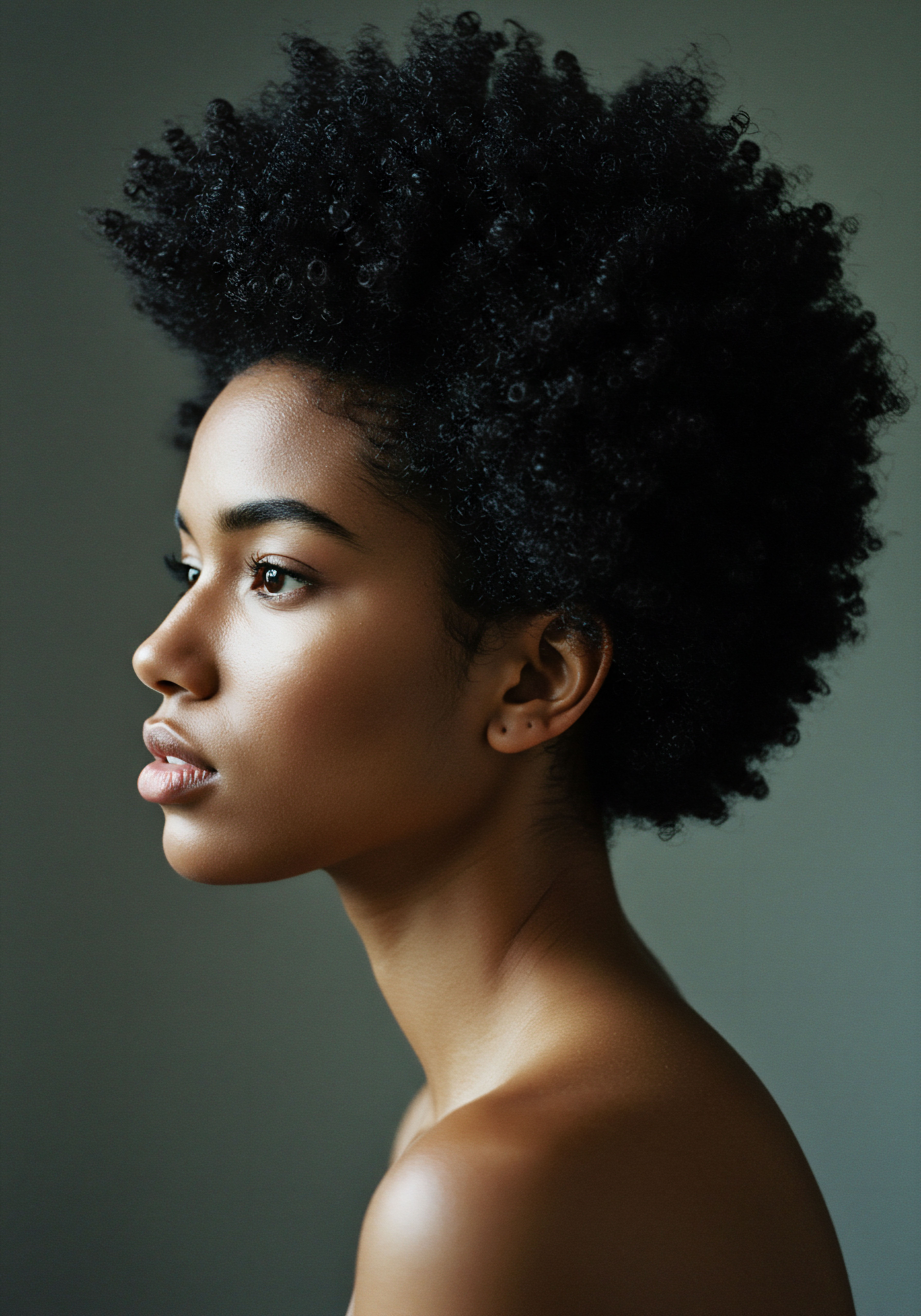
Ritual
As the sun dipped below the horizon, ancient peoples often transitioned from the day’s demands to a series of practices that prepared them for the quietude of night. Among these, the tending of hair held a distinctive place, evolving from simple acts of hygiene into intricate rituals that resonated with the rhythms of rest. This shift from foundational understanding to applied wisdom reveals how deeply conscious our ancestors were of the connection between their physical state, their mental calm, and the quality of their sleep. The techniques employed were not random; they were deliberate, often communal, and always aimed at fostering a sense of peace that would lead to restorative slumber.
The application of oils, the methodical combing, and the practice of covering the hair were not merely about maintaining appearance for the next day. They were acts of winding down, signals to the body that the time for activity was yielding to the time for repose. This section delves into these practices, observing how they became intertwined with the very fabric of ancient sleep routines.

The Evening Scalp Massage a Pathway to Tranquility
One of the most powerful and enduring hair care practices linked to sleep is the scalp massage. This technique, found across various ancient cultures, transcended simple grooming to become a therapeutic act. In India, the Ayurvedic practice of Shiroabhyanga, a head massage with warm oil, was a cornerstone of wellness.
It was not just about nourishing the hair and scalp; it was recognized for its ability to release nervous tension, alleviate stress and tension headaches, and significantly improve sleep quality, even addressing sleeplessness. The rhythmic, gentle pressure on the scalp was understood to stimulate energy points, improve circulation, and calm the nervous system, creating an ideal state for rest.
This is supported by modern understanding ❉ a scalp massage stimulates blood flow to the hair follicles, nourishing the scalp and promoting a healthier environment for hair growth. Beyond the physical, the very act of receiving or performing a scalp massage becomes a meditative experience, drawing attention inward and away from the day’s concerns. The use of specific oils, like those infused with lavender or brahmi, further amplifies this calming effect through aromatherapy.
The ancient ritual of scalp massage, particularly with warm oils, served as a profound calming agent, preparing both hair and mind for a deeper, more restorative sleep.
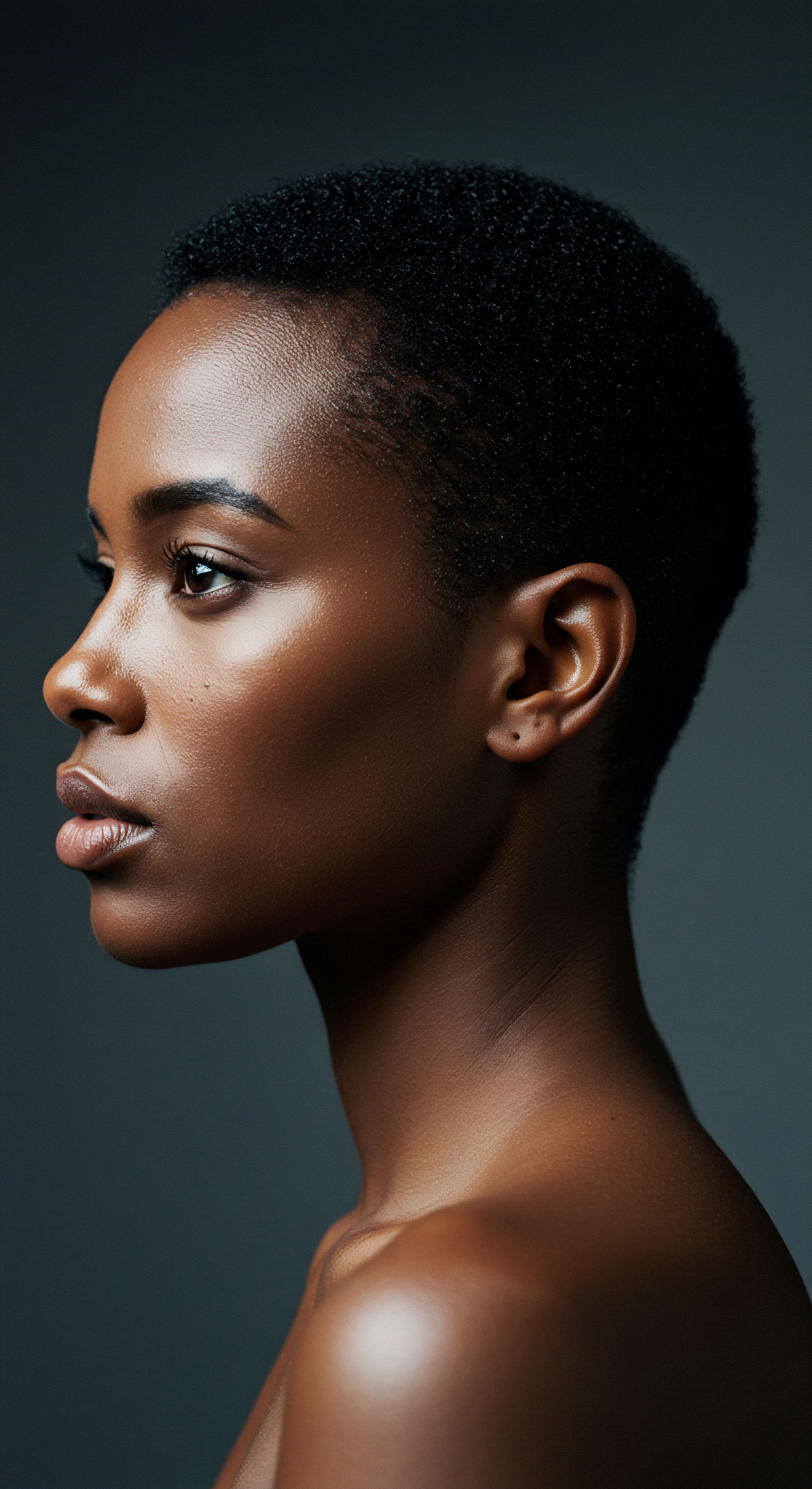
Protective Styles and Nightly Head Coverings
The preservation of hairstyles overnight was another practical hair care concern that influenced sleep. For cultures with elaborate coiffures, such as ancient Egypt or Rome, protecting these styles meant adopting specific sleeping arrangements. Wealthy Egyptians, for example, often used rigid neck supports instead of soft pillows to maintain their intricate wigs and hairstyles, ensuring they remained pristine for the next day. While this might seem counterintuitive to comfort, the desire to preserve a status symbol, which elaborate hair often represented, sometimes superseded immediate physical softness.
Beyond preserving style, head coverings played a significant role in nighttime hair care across various civilizations.
- Nightcaps ❉ European women, particularly from the mid-1800s onwards, wore nightcaps or sleeping caps. These were primarily for warmth in cold bedrooms, but silk versions were also recommended to keep hair tangle-free and glossy.
- Headwraps and Bonnets ❉ In African regions, headwraps, known as dukus or doek, were traditional attire with rich cultural significance. They were worn during sleep to protect hair from dust, dirt, and friction, especially for textured hair, which is prone to dryness and breakage. This practice helped maintain styles like braids and twists, ensuring hair remained hydrated and manageable.
These coverings served multiple purposes ❉ maintaining hygiene, protecting intricate styles, reducing friction on hair strands, and providing warmth. The reduction of friction, particularly for textured hair, is a significant benefit, as it prevents tangles and breakage that could lead to discomfort and disrupted sleep. The ritual of donning a specific head covering at night marked a clear transition from the public sphere of the day to the private sanctuary of sleep.

What Did Ancient Hair Cleansing Rituals Mean for Sleep?
The very act of cleansing hair, often a more infrequent but significant event in ancient times compared to today, was also tied to preparing for rest. While modern shampooing is a quick affair, ancient cleansing rituals could be more elaborate, involving natural mixtures of water, animal fats, lye, herbs, and even rice water. These processes, particularly when followed by drying and oiling, would leave the scalp feeling refreshed and clean, a sensation conducive to sleep.
In the Renaissance era, after hair washing, a special towel might be used to wrap the head, drying the hair and, importantly, keeping the head warm. It was advised that after such a wash, one should ideally rest. This points to an understanding that the body’s state post-cleansing, particularly a thorough one, required a period of calm before full engagement with the world. A clean, comfortable scalp, free from the day’s accumulation, directly supports a peaceful night.
| Culture/Era Ancient India (Ayurveda) |
| Nighttime Hair Practice Warm oil scalp massage (Shiroabhyanga) |
| Impact on Sleep/Comfort Deep relaxation, release of nervous tension, improved sleep, relief from sleeplessness. |
| Culture/Era Ancient Egypt |
| Nighttime Hair Practice Using rigid headrests for elaborate wigs |
| Impact on Sleep/Comfort Preserved hairstyles, maintained comfort by preventing hair disturbance. |
| Culture/Era Various African Cultures |
| Nighttime Hair Practice Wearing headwraps/bonnets |
| Impact on Sleep/Comfort Protected hair from tangles and breakage, retained moisture, provided warmth, comfort. |
| Culture/Era Medieval/Victorian Europe |
| Nighttime Hair Practice Wearing nightcaps (wool, flannel, silk) |
| Impact on Sleep/Comfort Provided warmth, kept hair tangle-free, preserved styles, and sometimes perfumed hair. |
| Culture/Era Ancient Rome |
| Nighttime Hair Practice Oiling hair and body with aromatics like lavender |
| Impact on Sleep/Comfort Promoted relaxation and created a calming atmosphere for rest. |
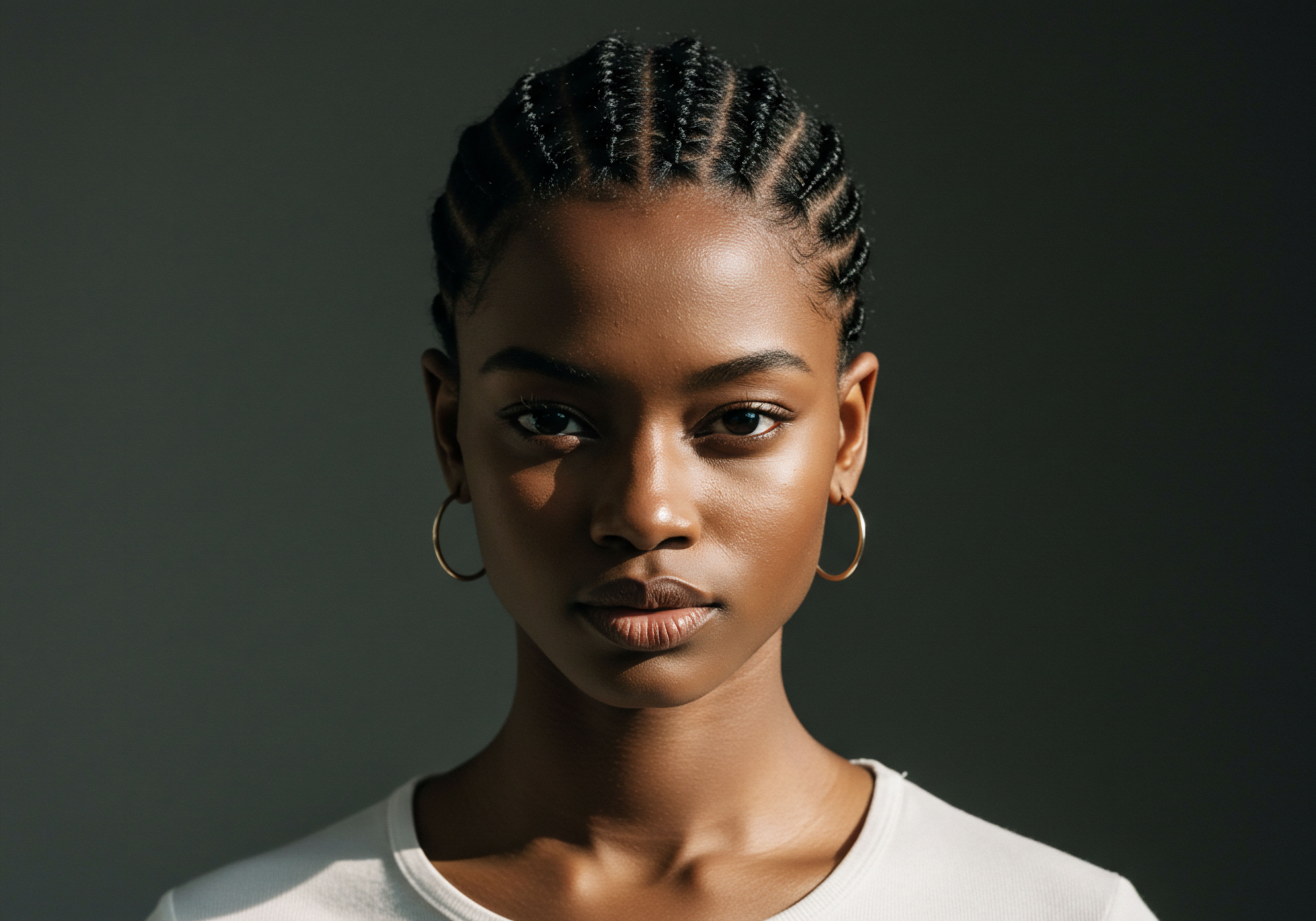
Relay
Stepping beyond the tangible practices, we enter a realm where ancient hair care rituals transmit deeper cultural and biological signals, influencing sleep routines in ways that transcend simple comfort. This level of exploration invites us to consider the intricate interplay of human biology, social structure, and spiritual belief that shaped nighttime preparations. The historical journey of hair care, particularly for textured hair, reveals not just a series of techniques but a profound dialogue between self-tending and the pursuit of holistic well-being, culminating in the serene embrace of sleep. We begin to see how the very act of preparing hair for the night was a complex, multi-dimensional phenomenon, rich with implications for rest.
The connection between hair care and sleep, therefore, is not merely anecdotal; it is deeply rooted in the historical understanding of the body, mind, and spirit as an interconnected system.
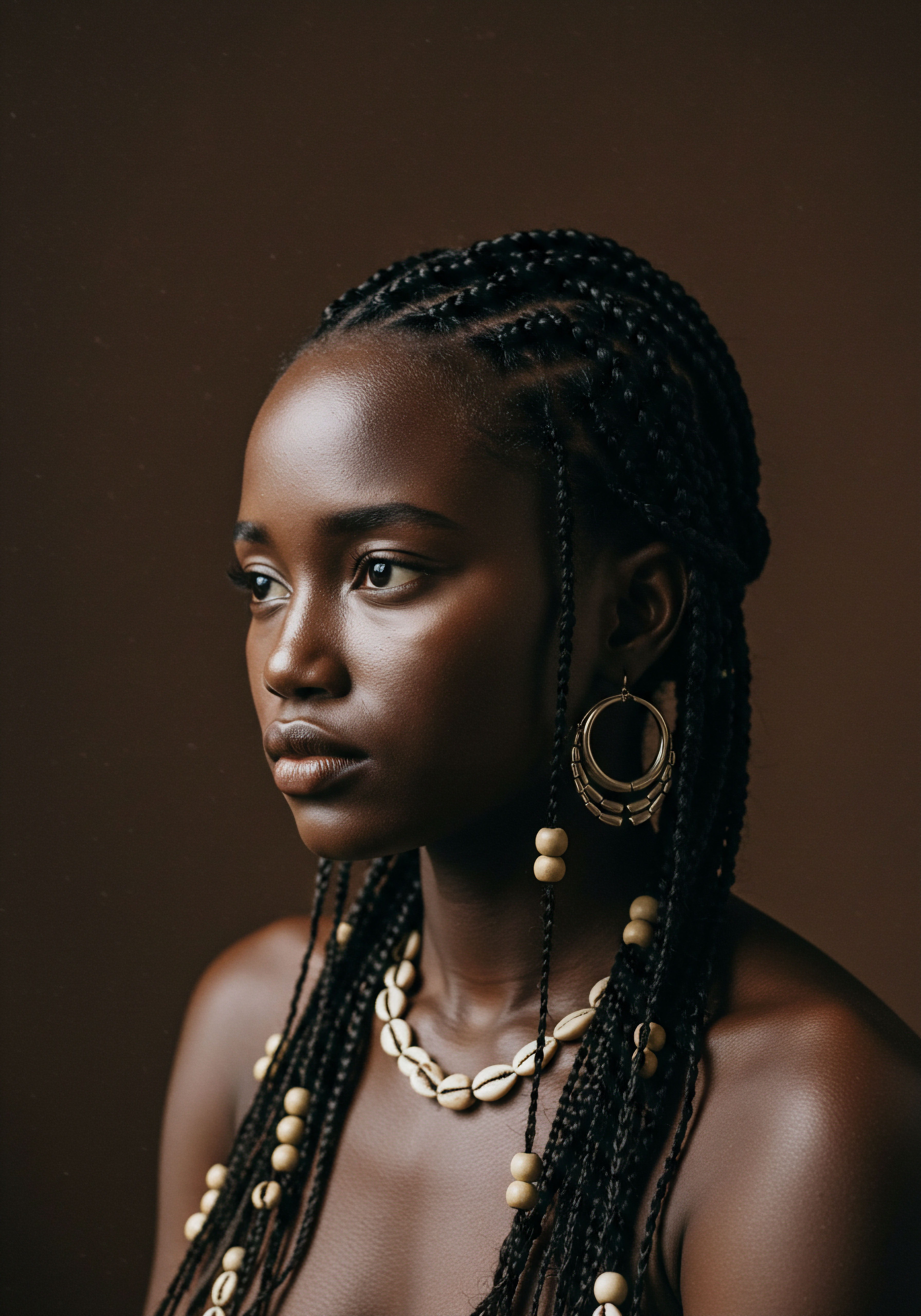
The Neurochemical Response to Nightly Grooming
The consistent, repetitive nature of ancient hair care practices, particularly scalp massages and oil applications, would have triggered significant neurochemical responses conducive to sleep. The human body is remarkably responsive to rhythmic, gentle touch. A scalp massage, for instance, stimulates nerve endings, leading to the release of endorphins, the body’s natural feel-good chemicals, while simultaneously lowering cortisol, the stress hormone. This biochemical shift directly translates to a reduction in stress and anxiety, setting the stage for improved sleep quality.
This effect is not a modern discovery; ancient texts, such as the Charaka Samhita, an Ayurvedic text, explicitly mention that attending to one’s head with oil leads to “pleasant sleep.” This ancient wisdom aligns with contemporary understanding of the vagus nerve stimulation, where gentle pressure on the head and neck can activate the parasympathetic nervous system, promoting a state of calm and rest.
Moreover, the incorporation of aromatic oils, such as lavender, in these nightly rituals would have added an olfactory dimension to the calming effect. Essential oil molecules, when inhaled, interact with the limbic system, the brain’s center for emotion and memory. Lavender and patchouli, for example, are known to quiet the nervous system, preparing the body for rest. This ancient aromatherapy, perhaps intuitively understood rather than scientifically dissected, played a significant role in signaling the body to wind down.
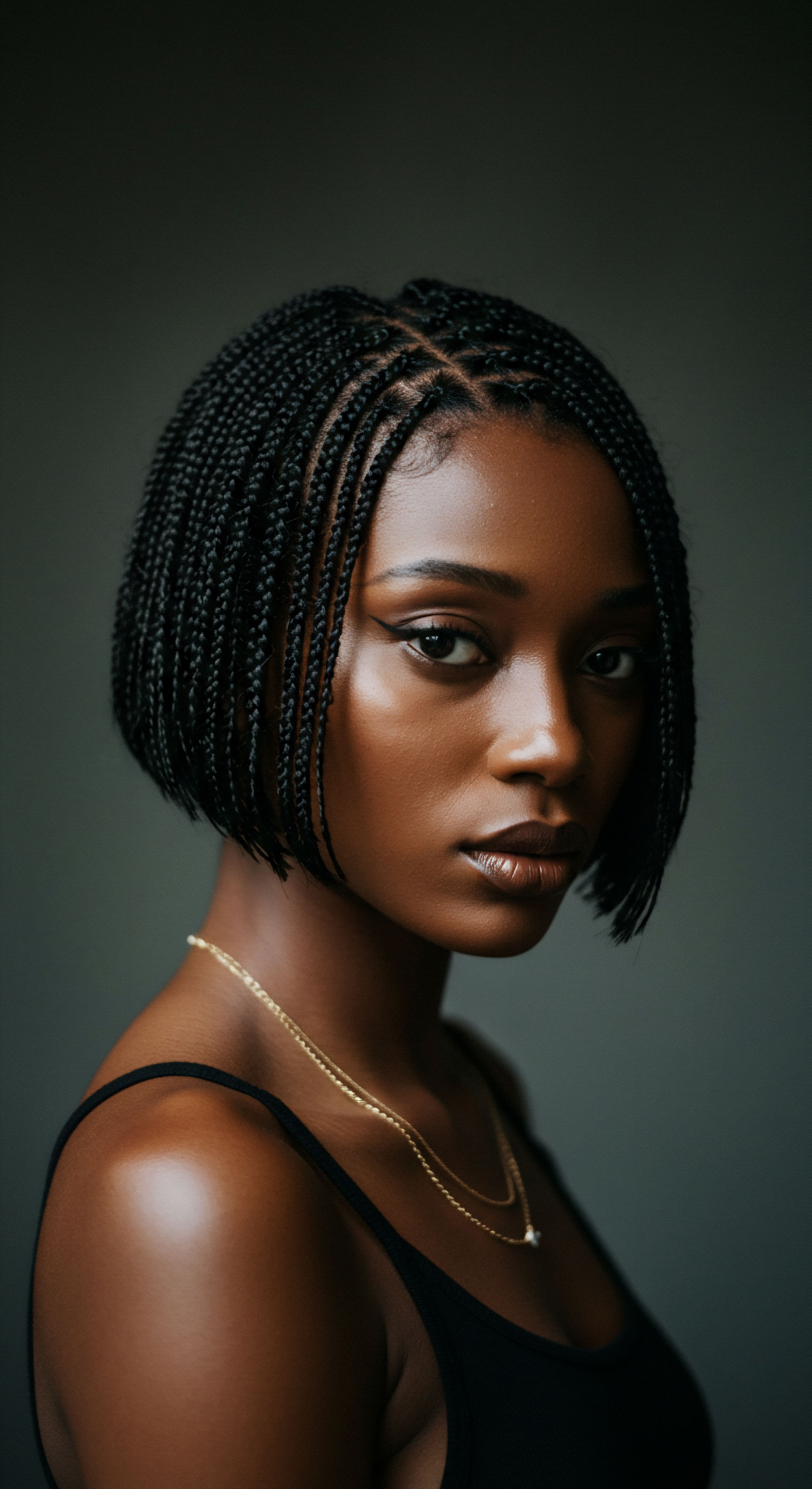
Social and Cultural Sleep Signals
Beyond the physiological, ancient hair care practices communicated powerful social and cultural signals about readiness for sleep. The transition from day to night often involved a shift in attire, behavior, and appearance. For women in various societies, loosening elaborate daytime hairstyles, applying nourishing oils, or donning a nightcap or headwrap marked the cessation of public engagement and the commencement of private, restorative time.
Consider the meticulous and time-consuming hair routines of Empress Elisabeth of Austria in the 19th century. Her hair care, which could take up to three hours daily, included washing with raw eggs and brandy every three weeks, a process that consumed an entire day and was followed by rest. While this specific example is from a later period, it underscores how deeply hair care was intertwined with daily schedules and the need for subsequent repose. The act of “putting up” or “taking down” one’s hair became a societal cue for the shift from active engagement to quiet retreat.
For Black women, headwraps and bonnets have a rich history of protecting textured hair, particularly at night. These coverings, made from materials like satin or silk, prevent friction that can cause breakage and moisture loss, ensuring hair health and preserving styles. The practice of wrapping hair at night, often involving twists or braids, is a practical and culturally significant routine that directly impacts sleep quality by ensuring comfort and reducing the need for extensive morning styling. This daily ritual not only preserves hair but also establishes a predictable pattern, aiding the body’s natural sleep-wake cycle.
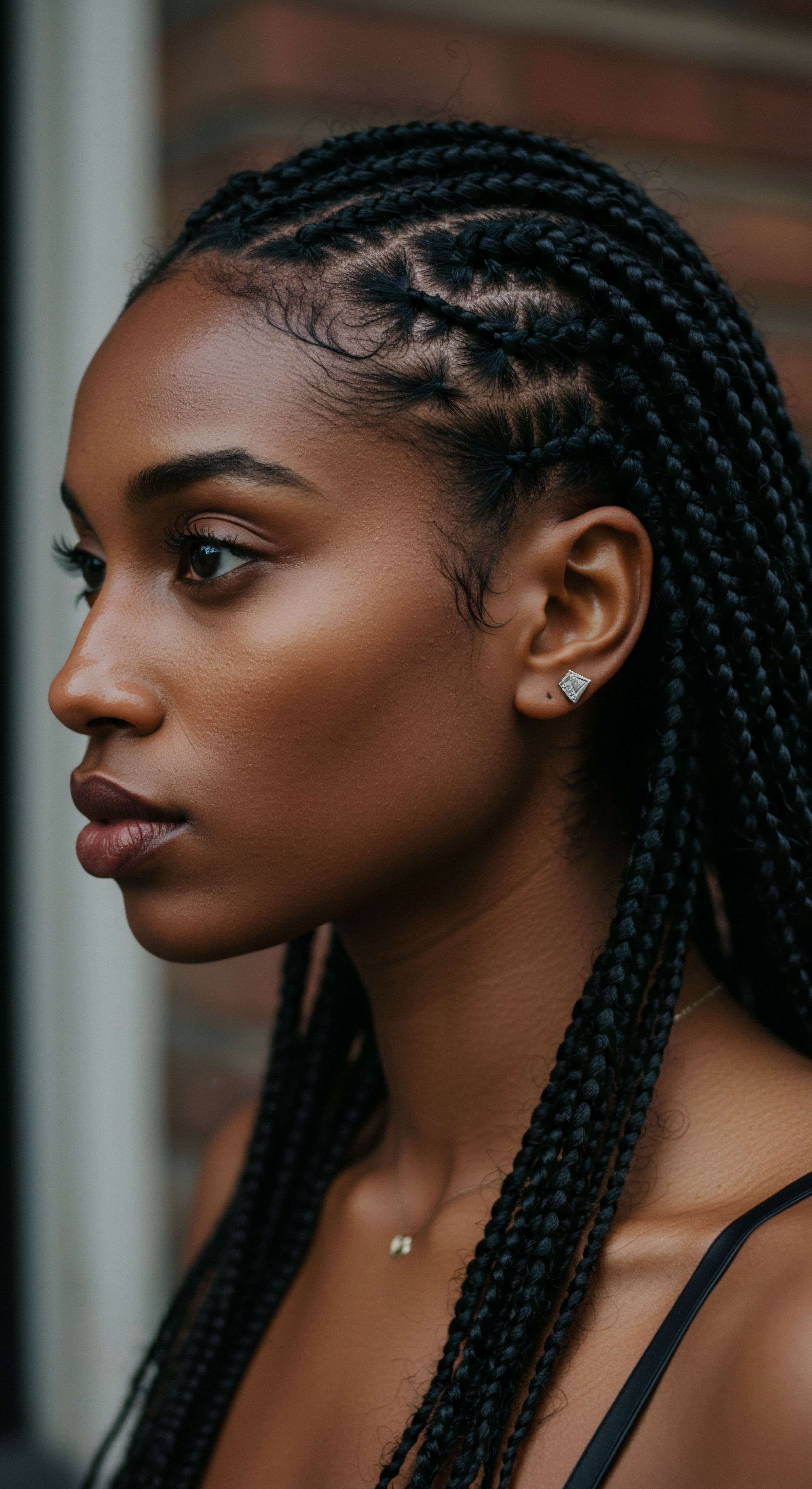
How Did Ritualized Hair Care Shape Sleep Environments?
The practices of ancient hair care also influenced the very environments in which people slept. The use of specific materials for head coverings, such as silk or satin, suggests an awareness of how different surfaces interact with hair, reducing tangles and breakage that could disrupt sleep. This is a principle still advocated today, where sleeping on a silk or satin pillowcase is recommended for its gentle effect on hair.
Furthermore, the emphasis on hygiene, as seen in ancient Israel’s rules for hand washing after sleeping or after cutting hair, highlights a societal awareness of cleanliness as a precursor to well-being, which naturally includes sleep. The removal of wigs in ancient Egypt before bathing and evening meals also points to a desire for a clean and unencumbered state before retiring. These habits suggest that a clean body and a comfortable, protected head were understood as foundational elements for a good night’s rest.
A study published in the Journal of Roman Archaeology by Janet Stephens, a hair stylist turned hairstyle archaeologist, demonstrated that intricate Roman hairstyles were not always wigs but complex, sewn-in styles that could be maintained for days by wrapping the hair during sleep. This implies that the very structure of these styles necessitated specific nighttime care, directly linking hair aesthetics to sleep practices and the development of tools or methods to support them. The need to preserve these elaborate coiffures likely led to the development of specific nighttime routines and accessories that minimized disturbance and maximized comfort for the wearer during rest.
The following table details the physiological and psychological impacts of these practices:
| Practice Scalp Massage with Oils |
| Physiological Impact Increased blood circulation to scalp, reduced muscle tension, release of endorphins, lowered cortisol levels. |
| Psychological Impact Stress reduction, anxiety alleviation, deep relaxation, mental calm, improved mood. |
| Practice Nightly Hair Covering (Bonnets, Wraps) |
| Physiological Impact Reduced hair friction and breakage, moisture retention, protection from environmental irritants. |
| Psychological Impact Sense of protection and security, preservation of morning appearance, reduction of morning styling stress. |
| Practice Cleansing Rituals (pre-sleep) |
| Physiological Impact Clean scalp, removal of irritants and product buildup, physical freshness. |
| Psychological Impact Sense of purity and renewal, mental readiness for rest, reduction of discomfort. |
| Practice Use of Aromatic Herbs/Oils |
| Physiological Impact Olfactory stimulation of limbic system, potential activation of parasympathetic nervous system. |
| Psychological Impact Induction of calm, mood uplift, preparation for sleep, sensory comfort. |

Reflection
The journey through ancient hair care practices and their profound influence on sleep routines reveals a delicate interplay between the tangible and the intangible. Our ancestors, through their deliberate acts of tending to their hair, crafted not just beautiful appearances but also pathways to tranquility. They understood, perhaps intuitively, that a soothed scalp, protected strands, and a mind unwound by ritual could usher in a more restorative rest.
This understanding extends beyond the mere physical; it speaks to the deeper human need for order, comfort, and a sense of care that transcends the waking hours. The echo of these practices, from the calming touch of an oiled scalp to the comforting embrace of a nightcap, still resonates today, reminding us that the secrets to serene sleep might lie in the quiet wisdom of the past, gently beckoning us toward a more holistic approach to our nightly rhythms.
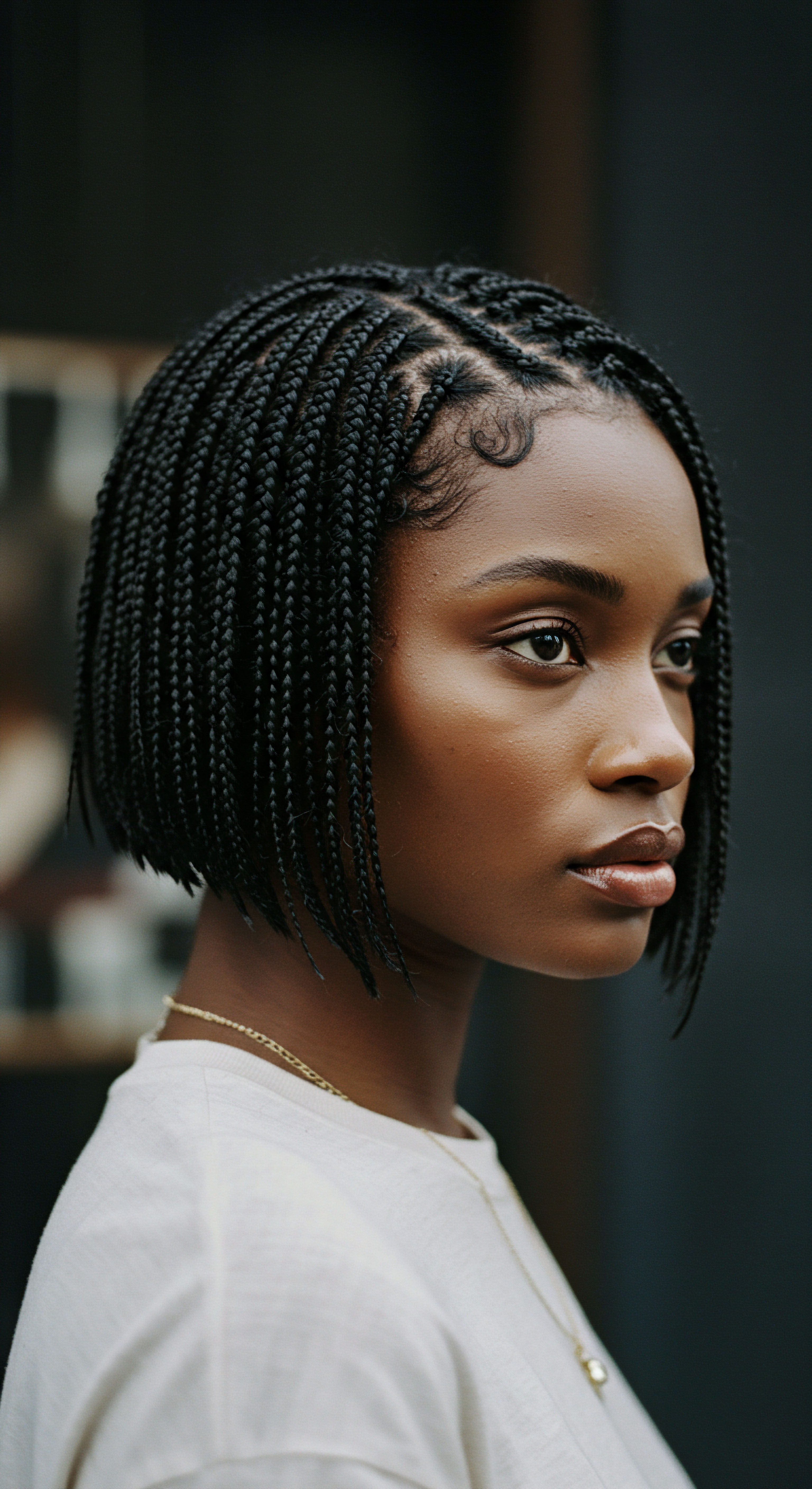
References
- Matthews, Mimi. “The Beauty Rituals of 19th Century Empress Elisabeth of Austria.” Mimi Matthews, 5 Oct. 2015.
- “Hair Care Secrets of the Past ❉ What Our Ancestors Used for Healthy Hair.” Vertex AI Search, 19 Aug. 2024.
- “History Of The Nightcap – Victorian And Edwardian Hair Care – Sew Historically.” Sew Historically, 8 June 2019.
- “Benefits of Ayurvedic Head Massage – Auromere.” Auromere, 1 June 2020.
- “Revitalizing Hair with Ancient Elixirs ❉ Unveiling the Secrets of Hair Oils – Clinikally.” Clinikally, 7 June 2024.
- “Exploring Ancient Hair Care Rituals ❉ Timeless Practices for Modern Hair Wellness – Rthvi.” Rthvi, 30 Oct. 2024.
- “8 Scalp Massage Benefits for Hair and Mind – Pump Haircare.” Pump Haircare.
- “Hair Care through the ages ❉ Inspired by the past, Designed for the future | Safic-Alcan.” Safic-Alcan.
- “Ancient Herbs That Transform Your Hair ❉ Discover the Secret in Re-Me Hair Oil.” Re-Me Hair Oil.
- “Tresses Through Time ❉ A Journey Through the History of Hair Care – Ruwaa Life.” Ruwaa Life, 14 June 2024.
- “The Significance and History of Bonnets – Byrdie.” Byrdie, 27 Sept. 2022.
- “The Evolution of Shampoo ❉ From Ancient Times to Modern Formulas – On Line Hair Depot.” On Line Hair Depot, 21 Dec. 2023.
- “The Effect Of Herbal Ginger Therapy On Head Massage – Spa Restoration Center.” Spa Restoration Center, 24 Apr. 2024.
- “Herbal Hair Oil |Ancient Homemade Formula|200ml| – Kalagura Gampa Store.” Kalagura Gampa Store.
- “Ancients Ayurvedic Hair Care Secrets – Parachute Advansed.” Parachute Advansed, 3 July 2024.
- “The Timeless Art of Scalp Massage ❉ From Ancient Rituals to Modern Hair Care – houzaide.” houzaide, 26 Oct. 2024.
- “Reviving Ancient Hair Rituals ❉ Exploring the Therapeutic Art of Hair-Oiling – Clinikally.” Clinikally, 3 June 2024.
- “The History of Aromatherapy – Purodem.” Purodem, 14 Oct. 2023.
- “Traditional African Secrets For Long And Healthy Hair – Africa Imports.” Africa Imports.
- “8 Benefits of an Indian Head Massage – Makkha Spa.” Makkha Spa, 22 May 2025.
- “Soul-Soothing Scents ❉ A Journey Through the Ages of Essential Oils – Shower Story.” Shower Story, 21 Nov. 2023.
- “Hair Care Practices in African-American Patients.”
- “Hygiene in Ancient Israel | Immanuel Tours.” Immanuel Tours, 11 Nov. 2022.
- “The history & meaning of head wraps across Africa – Wilderness Safaris.” Wilderness Safaris, 25 Jan. 2015.
- “Hair in Ancient Rome ❉ Styles, Beards, Shaving, Barbers, Slave Stylists.” Facts and Details.
- “Caring for Afro-textured hair – British Association of Dermatologists.” British Association of Dermatologists.
- “What are the ancient Egyptians used to sleep on pillows made of? – Quora.” Quora, 16 Feb. 2023.
- “History Of Essential Oils.” Essential Oil Experts, 2 Sept. 2023.
- “Victorian nightcaps – Recollections Blog.” Recollections Blog, 28 Oct. 2021.
- “Oil ❉ The ancient elixir of the East – Global Beauty Secrets.” Global Beauty Secrets, 1 Aug. 2022.
- “Sweet Dreams ❉ a History of the Nightcap – YouTube.” YouTube, 31 May 2024.
- “Wealthy Egyptians in Ancient Egypt slept with neck supports instead of pillows to preserve their hairstyles and keep them looking fresh. ❉ r/interestingasfuck – Reddit.” Reddit, 5 May 2023.
- “Afro Hair Care – The Ultimate Guide for 2022.” Unruly, 23 June 2022.
- “The History and Origins of Aromatherapy and Essential Oils.” Healthline, 28 Mar. 2023.
- “A natural history of hygiene – PMC.” PMC.
- “The Bonding Ritual of Hair Oiling – Brown History.” Brown History, 11 May 2023.
- “How To ❉ Afro Night-Time Routine | Unruly.” Unruly.
- “Essential Oils for Hair & Sleep ❉ A Holistic Approach to Scalp, Hair, and Rest.” Holistic Hair.
- “Hair in the Classical World Ritual and Rites of Passage Wall Text – DigitalCommons@Fairfield.” DigitalCommons@Fairfield.
- “Ancient Egypt Tribe Series Printing Satin Bonnet Silk Bonnet for Sleeping Double-Layer Adjustable Hair Wrap Sleep Cap for Women Black – Amazon.com.” Amazon.com.
- “How did the people of ancient times care for their personal hygiene and health? – Quora.” Quora, 30 Apr. 2019.
- “Ancient Egyptian Beauty Secrets That Still Work Today | Timeless Skincare & Haircare Tips.” YouTube, 28 Nov. 2024.
- “Hygiene Through History ❉ How Filthy Were Our Ancient Ancestors?” World History Encyclopedia, 7 Nov. 2022.
- “Golden Locks ❉ Hair Care in the Renaissance Era – Living History.” Living History, 5 Apr. 2024.
- “Boring History For Sleep | How Romans Cleaned Their Hair Without Shampoo and more.” YouTube, 15 May 2025.
- “Ancient hair rituals for modern mindfulness – Chāmpo.” Chāmpo.
- “Cosmetics, Perfume, & Hygiene in Ancient Egypt – World History Encyclopedia.” World History Encyclopedia, 4 May 2017.
- “Cosmetics in ancient Rome – Wikipedia.” Wikipedia.
- “8 Nighttime Hair Care Rituals for Radiant Hair – L’Oréal Paris.” L’Oréal Paris, 26 Apr. 2019.
- “TIL about Janet Stephens, a hair stylist turned hairstyle archeologist. She visited a museum in 2001 and realized historians were wrong about hairstyles on Greek and Roman statues being wigs. She recreated the styles and published her findings in The Journal of Roman Archaeology. ❉ r/todayilearned – Reddit.” Reddit, 30 July 2022.